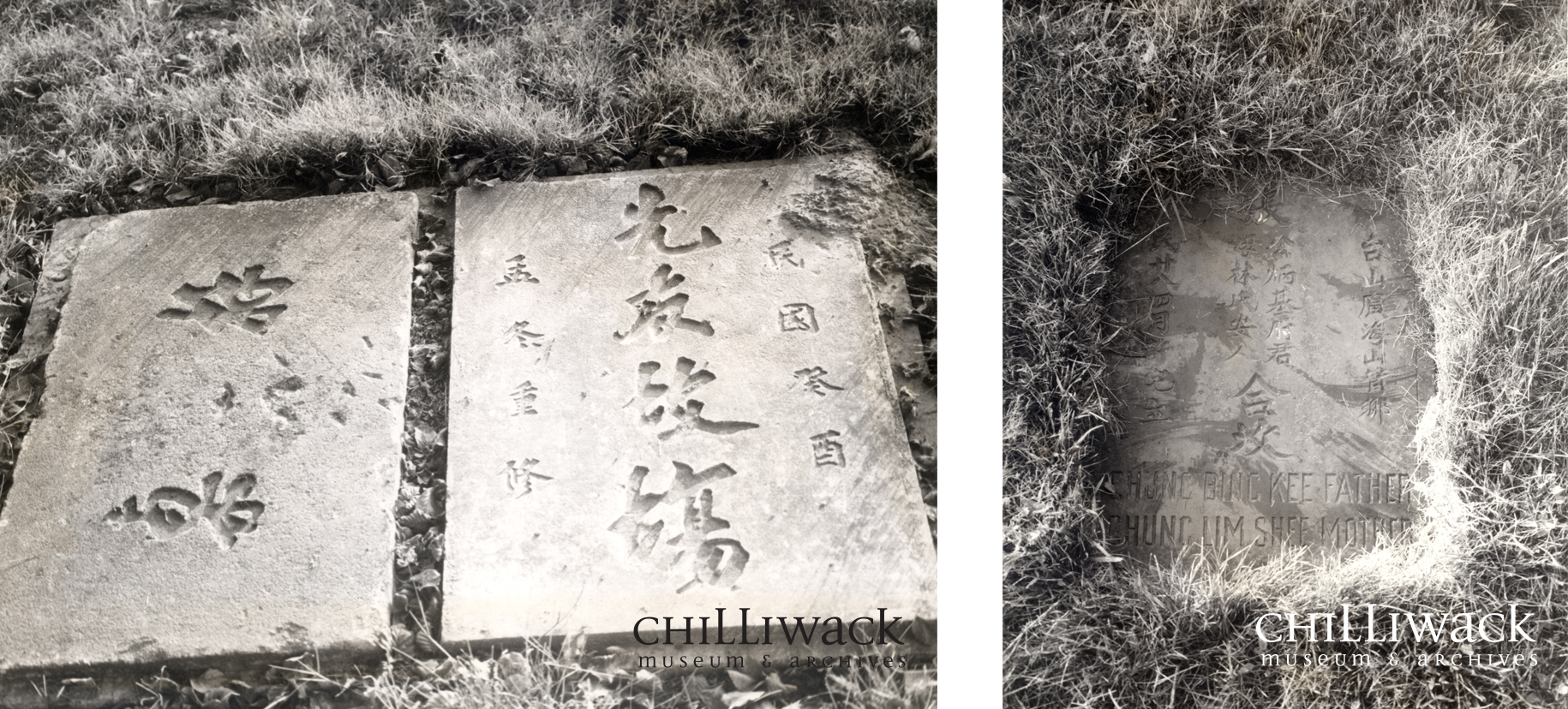Fires and Decline of Chilliwack’s Chinatowns
We can’t bring the Chinatowns back, but by remembering the role that Chinese people have played in founding the community, the immigrant community here, by remembering that, we can make Chilliwack richer.
-Dr. Chad Reimer, author of Chilliwack’s Chinatowns.
Today, there are no physical remains of the businesses and residences of Chilliwack’s once-vibrant Chinatowns. The fires of 1921 in Chinatown North, along with the fires of 1932 and 1934 in Chinatown South, destroyed many of the Chinatowns original buildings. Remaining features of both Chinatowns have been developed numerous times over to make room for new neighbourhoods.

Marker stones in the former Chinese section of the Chilliwack Cemetery (left) and headstone of Chung Bing Kee and Chung Lim Shee (right), no date.
Chilliwack Museum and Archives, Add. Mss. 257 File 5 Picture 2 & Picture 1
However, while these historic buildings have disappeared today, many lasted for years and several families remained and established strong community ties after the fires:
- On Lee’s Fruit and Vegetable store (once known as On Lee & Co., a grocery, laundry and boarding house founded by Chong Shing Lai), remained a popular fixture in downtown Chilliwack until after World War II.
- The second Chinese Masonic Hall, rebuilt in 1932, stood until its demolition in 1957.
- The two-storey home of Woo Bing in Chinatown South was later converted into Woo Farms, a business run by Woo’s son, Louie Woo, until c. 1994.
- Chung Bing Kee and Lim Shee Chung lived on Yale Road with their eight children, who became well-respected members of Chilliwack society.
These families were the exception. The repeated fires in Chilliwack’s Chinatowns, along with the hardships faced as a result of the political and social atmosphere of the era in both Chilliwack and British Columbia as a whole, resulted in many of Chilliwack’s Chinese residents leaving the city for larger urban centres such as Vancouver. The story of Chilliwack’s Chinatowns showcases how greater tolerance and acceptance could have preserved the historically rich and significant structures associated with the first generation of Chinese immigrants in Chilliwack.
Watch the interview below with Dr Chad Reimer, author of Chilliwack’s Chinatowns to learn more about what Chilliwack might look like today, had its Chinatowns survived.
The legacy of Chilliwack’s Chinatowns lives on through the collection of artifacts located at the Chilliwack Museum and Archives. Donations from Chinese relatives and families who remained in Chilliwack and gifts offered by the Chinese during holidays such as Chinese New Year ensure that the hard work and perseverance of Chilliwack’s first Chinese men, women, and families can not be forgotten by Chilliwackians.


